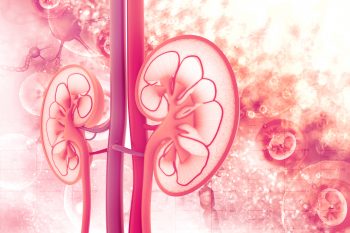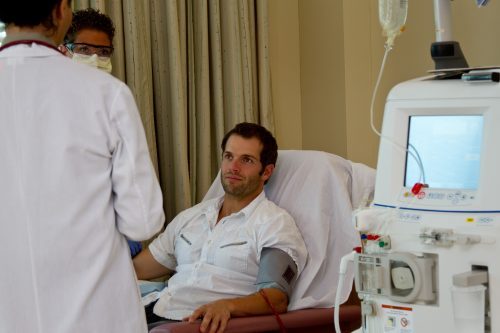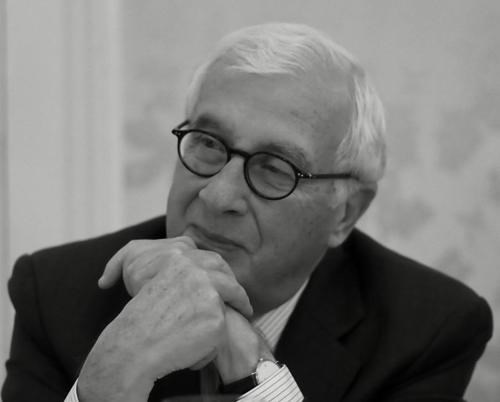
In a thought-provoking Viewpoint article in JAMA Surgery1, Arthur Matas, MD, makes the case for introducing a regulated system for incentives for kidney donation.
Data from the US Organ Procurement and Transplant Network (OPTN) show the extent of the kidney organ shortage in the US. More than 90,000 patients are on the kidney transplant waiting list and, since 1990, nearly 90,000 transplant candidates in the US have died waiting for a kidney, while 55,000 have been removed from the waiting list because they were too sick.
Matas proposes a vision for a regulated system of incentives to stimulate greater donation. He suggests a regulated system governed by the US government or a government-appointed agency. The regulatory framework Matas envisions would set guidelines and rules, such as acceptance criteria for donors and novel organ allocation schemes, but would also extend to pilot incentives models, such as tax benefits or provision of coverage for healthcare costs. Matas proposes that the system would be limited to citizens and legal residents so that patients could be followed for long-term assessment of outcomes.
The voices that oppose an incentive system raise ethical concerns, some legitimate, but many not. These include the potential risk to an incentivized donor and the purported complexity of obtaining consent—both easily overcome, says Dr. Matas, if one follows the same procedure as for an unincentivized donor.
Opponents of a regulated system say that a system of incentives would threaten the whole concept of altruism. Matas makes the point that kidney donation isn’t really altruism in its truest sense (altruism is defined by Merriam Webster as “unselfish regard for, or devotion to, the welfare of others”), because organ donation doesn’t encompass what really happens, which is that donors have complex motivations to donate. Some donate because of a family relationship, others through a sense of guilt, and some because of direct or indirect financial benefits. An excellent paper by Mélanie Levy2 argues that while “altruism should remain at the heart of donation, as it reflects important community values…this does not exclude the possibility of introducing a reward.” She further makes the point that based on Maussian gift exchange theory, gift giving also involves receiving and reciprocity. This gift giving concept in the context of transplantation has been further expanded by others, including Renee Fox and Judith Swazey.3
The other point made by opponents is that a regulated system would erode trust in government and institutions. Matas argues that there are several examples where this hasn’t happened, such as sperm donation.
Another key critique of a regulated system is that incentives have the potential to exploit people with low incomes, particularly those who don’t quite understand what’s at stake. Matas argues that if the system works as designed, then the risk of exploitation won’t occur. In fact, several examples, including Iran and Israel, demonstrate that a national regulated framework minimizes the risk of a black market for organs.
A more existential critique of a regulated system is that bioethicists are naïve in assuming a goodness in society that may not exist. Leon R. Kass, chairman of the President’s Council on Bioethics from 2001 to 2005, writing in the New Republic4: “Part of the blame for our complacency lies, sadly, with the field of bioethics itself, and its claim to expertise in these moral matters. With its capture by analytic philosophy, however, and its inevitable routinization and professionalization, the field has by and large come to content itself with analyzing moral arguments, reacting to new technological developments, and taking on emerging issues of public policy, all performed with a naïve faith that the evils we fear can all be avoided by compassion, regulation and a respect for autonomy.”
Dr. Matas and colleagues, in an earlier paper5, make the important point that it is “underground, unregulated markets [that] have been associated with exploitation of the poor and vulnerable…Living donors who participate in these unregulated markets are often poorly informed about the procedure, deprived of appropriate screening and of quality postoperative and continuing medical care, and not compensated as agreed upon…the ‘evidence’ used as the basis of that argument has almost entirely been drawn from observation of unregulated organ markets.”
In evaluating whether Dr. Matas is right about the wisdom of adopting a regulated system of incentives in US, it is worth looking at the experience of both Iran and Israel who have regulated systems of kidney donation.
The Iranian regulated national system for kidney donation was launched in 1988, and by 1999, according to the government of Iran, eliminated the transplant waiting list. In 1988, 245 kidney transplants were performed in Iran. By 2005 the number had grown to 1891. The Iranian system involves two tracks—living related and living unrelated. If a potential recipient doesn’t have a living related donor then the patient is referred to an organization—the Dialysis and Transplant Patients Association (DATPA)—to locate a suitable living-unrelated donor. The DATPA then matches the potential donor to a potential recipient. The living unrelated donors in the system receive a payment of about USD $1200 and the government provides subsidized essential immunosuppressive drugs. More details on the Iranian system are detailed in an excellent Clinical Journal of the American Society of Nephrology review.6
In an article from the Associated Press (AP) published in STAT News7, Hashem Ghasemi, the head of the patient-run Dialysis and Transplant Patients Association of Iran, says: “Some donors have financial motivations. We can’t say they don’t. If [those donors] didn’t have financial motives, they wouldn’t donate a kidney…And some people just have charitable motivations.” According to the AP article, the Iranian system has guardrails to mitigate the risk of black market organ sales and create a regulatory framework. In Iran, nonprofit groups handle all arrangements and hold money in escrow until after the surgery. The government’s Health Department also must approve the surgeries, which take place in licensed and monitored hospitals. Foreigners are now largely banned from taking part, squelching the possibility of medical tourism.
Despite its success in eliminating the transplant waiting list, the Iranian system has been criticized because of reports of donors expressing financial pressure, and the financial transaction being supplemented by other gifts. Also, there is the question of whether a regulated system that works in an authoritarian context like Iran would work in the US. Still, the Iranian experience suggests that a regulated system implemented effectively could transform the availability of kidneys for donation.
The other model that has shown impressive success is the Israeli system of regulated incentives.2 The Israeli Organ Transplantation Law, introduced in March 2008, has countered very low kidney donation rates in Israel by creating a points-based system to designate priority on the kidney transplant waiting list. The system works by allocating priority by points that are weighted by specific circumstances. Top priority is granted to individuals with a first-degree relative who donated organs after death to non-directed and directed living donors. Second priority is granted to those who sign a donor card consenting to donate their organs after death, and third priority to individuals with a first-degree relative who has signed a donor card. For those who fall into more than one category, the highest category gets counted. Those <18 years of age also receive relative prioritization. Published data have shown that the system has resulted in a substantial increase in kidneys available for donation. In 2014, 30% of transplanted patients were advanced in line based on their priority status; in 2015, this percentage increased to 32%.2
My take on the Matas viewpoint article is that he does have a point. Most of the growth in kidney transplantation can be accounted for by the increase in deceased donor transplantation. If we want to increase living related transplantation, then we should think seriously about introducing a regulated system of incentives. As a nephrology and transplant community, we need to advocate for transformational change to eliminate the transplant waiting list.
References
- Matas AJ. A Regulated System of Incentives for Kidney Donation—Time for a Trial! JAMA Surg. Published online June 02, 2021. doi:10.1001/jamasurg.2021.1435.
- Mélanie Levy. State incentives to promote organ donation: honoring the principles of reciprocity and solidarity inherent in the gift relationship, Journal of Law and the Biosciences, Volume 5, Issue 2, August 2018, Pages 398–435, https://doi.org/10.1093/jlb/lsy009.
- The Courage to Fail: A Social View of Organ Transplants and Dialysis. Renee C. Fox , Judith P. Swazey, University of Chicago Press (1974).
- Kass LR. The wisdom of repugnance: why we should ban the cloning of humans. New Repub. 1997 Jun 2;216(22):17-26. PMID: 11654974.
- Working Group on Incentives for Living Donation. Matas AJ, Satel S, et al. Incentives for organ donation: proposed standards for an internationally acceptable system. Am J Transplant. 2012;12(2):306-312. doi:10.1111/j.1600-6143.2011.03881.x.
- Ahad J.Ghods, Shekoufeh Savaj Iranian Model of Paid and Regulated Living-Unrelated Kidney Donation. Nov 2006, 1(6):1136-1145; doi: 10.2215/CJN.00700206 https://cjasn.asnjournals.org/content/1/6/1136.
- Associated Press: In Iran, unique system allows payments for kidney donors https://www.statnews.com/2016/08/25/organ-donation-kidneys-iran/.







 © 2025 Mashup Media, LLC, a Formedics Property. All Rights Reserved.
© 2025 Mashup Media, LLC, a Formedics Property. All Rights Reserved.